
Body Forms
Body Forms
Animals come in a wide variety of shapes and sizes. This section relates body form to survival.
Learning Objective: Describe the basic body forms found in animals and discuss how these forms relate to survival.
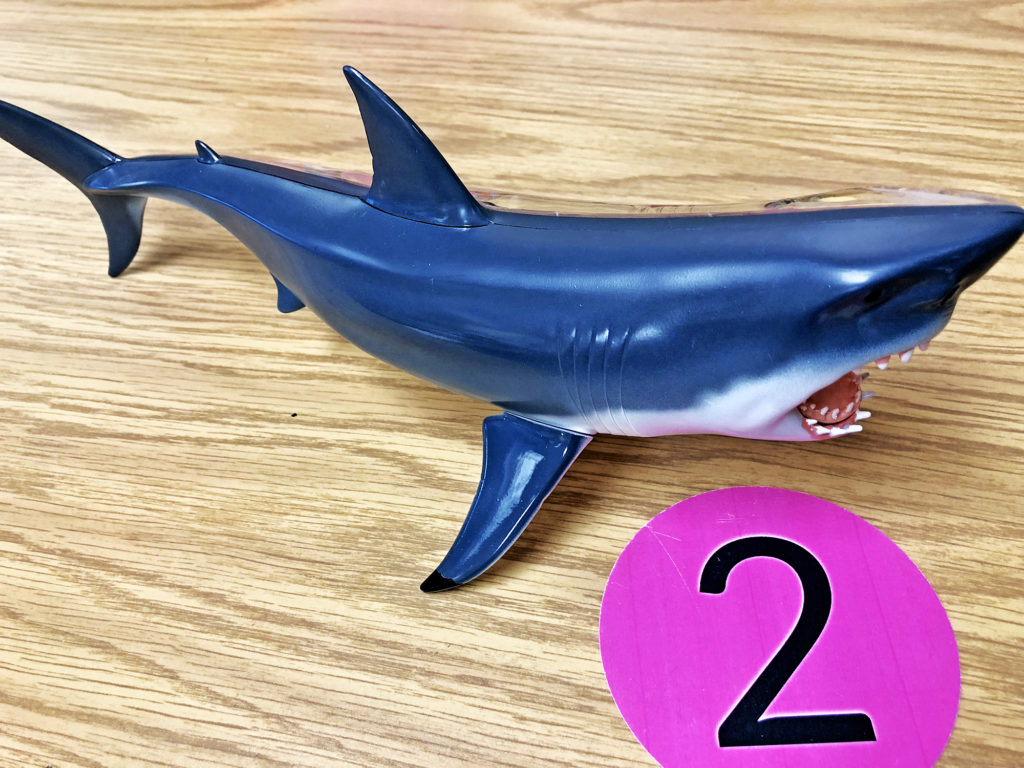

One of the first things you notice when you see an animal is its body form: the shape and overall size.
Shape combines many elements including symmetry. For this sea star, the symmetry is radial (radiates from a central point), it does not have obvious segments like an insect, and it has five limbs (legs).
Some animals, particularly sponges, do not have a consistent symmetry. Cells grow in different directions. Other organisms have genetic controls on the amount and direction of cell growth that results in symmetry.
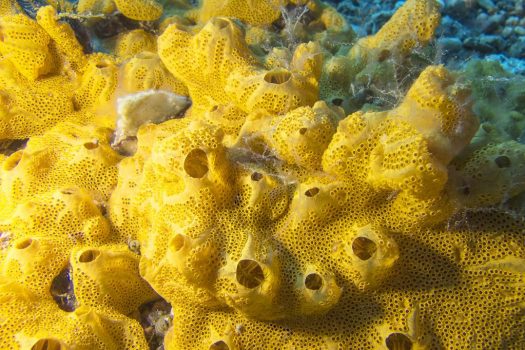
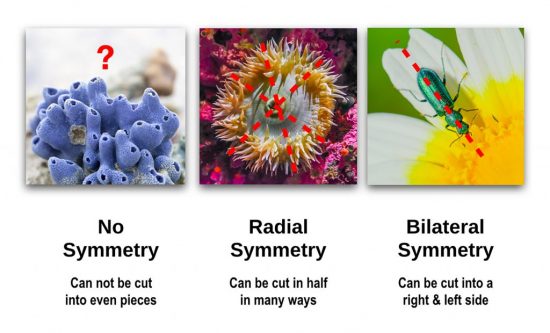
Of the 35+ animal phyla, two have easy to observe radial symmetry.
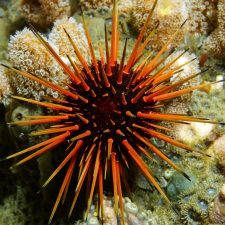
Phylum Echinodermata
(sea stars, sea urchins, sea biscuits)
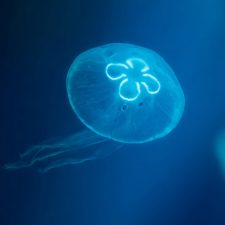
Phylum Cnidaria
(corals, anemones, jellyfish)
Most animals that move rapidly have bilateral symmetry; potentially due to the movement of one side and then the other to propel forward.
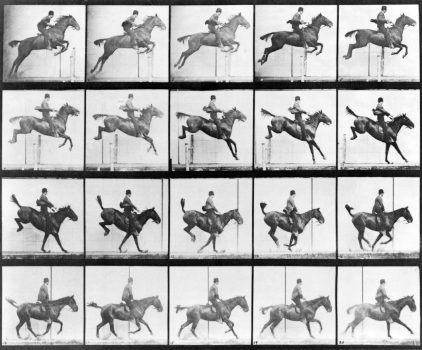
Body shape relates to environmental factors.
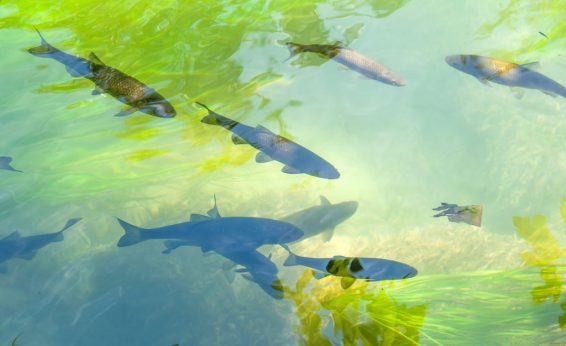
Aquatic
Aquatic species often have a fusiform (tubular) shape that reduces drag
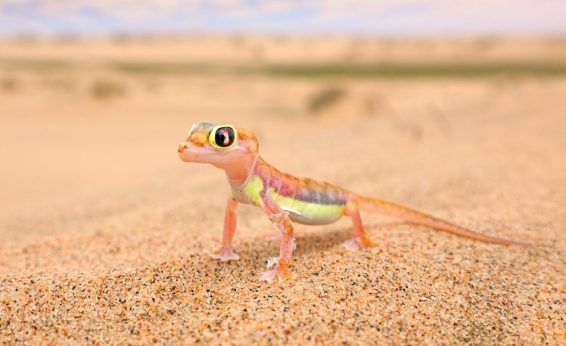
Terrestrial
Terrestrial species often have structures that are adapted to cope with gravity, including strong skeletons and musculature.
Climate relates to body shapes
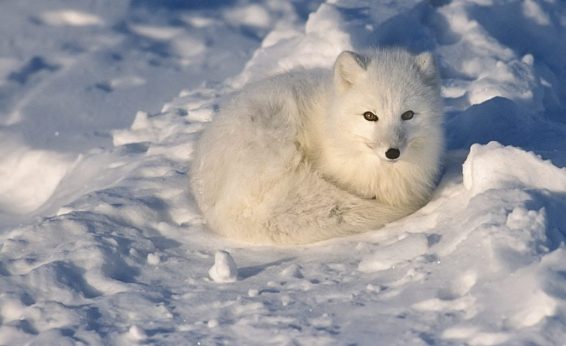
Extreme Cold
Species in cold ecosystems sometimes have reduced structures, like smaller ears, to decrease exposed surface area. The arctic fox has the smallest relative ear size of any fox species.
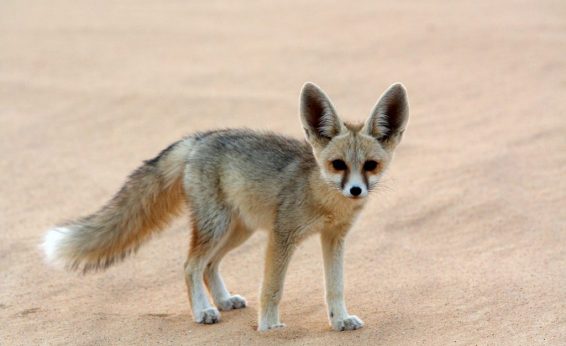
Extreme Heat
Species in hot environments may have structure to dissipate heat. The ears of this desert fox have blood vessels that lose heat, reducing internal temperature.
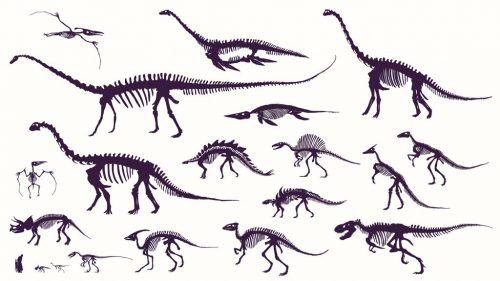
Exoskeletons and endoskeletons impact the overall size of organisms.
Exoskeleton: a rigid external structure that protects and supports invertebrate bodies.
Endoskeleton: vertebrate internal structures made of cartilage or bone.
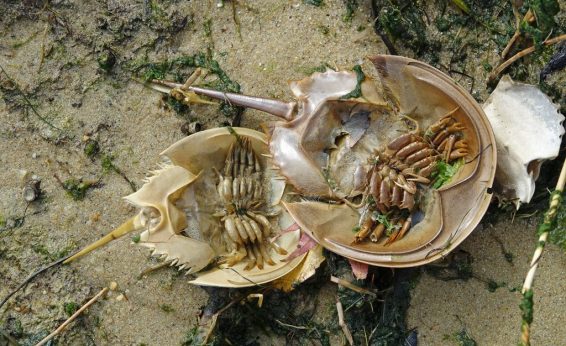
Exoskeleton
Organisms molt (shed) their exoskeleton to grow in size. With each molt, the exoskeleton thickens. This thickness limits the number of molts and overall size.
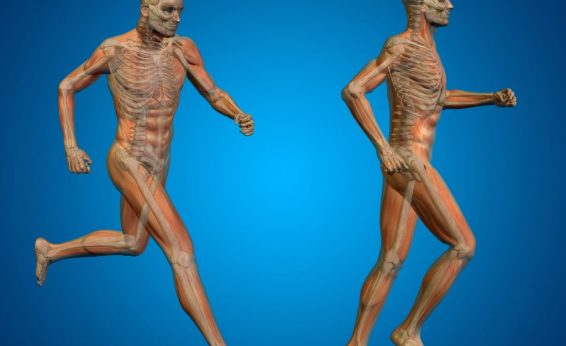
Endoskeleton
Organisms with an internal skeleton have to have enough skeleton to support the muscles and organs needed for movement. The larger the organism, the heavier the skeleton needed to move.
Body size impacts an animal’s metabolism.
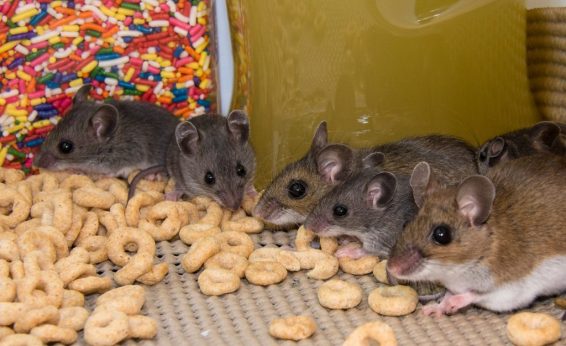
Small Animals
Small animals have a large surface area relative to their body mass and lose more heat related to body size. This means they have a higher metabolism and need to eat more food relative to their body size. Many small mammals eat high energy fruits, seeds, and insects.
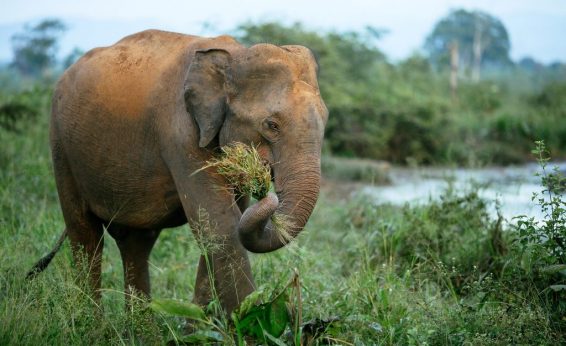
Large Animals
Large animals have a smaller exposed surface area relative to body mass. This means less relative heat loss, lower metabolism, and a lower food requirement relative to size. An elephant’s metabolic rate per gram of tissue, is approximately a tenth of a mouse’s metabolic rate.
Describe the body shape of the shark and sting ray.
Watch this video; you can select the closed captioning “cc” option if you would like to see the text.
The next section is a closer look at a significant body structure in vertebrates: the skull.











